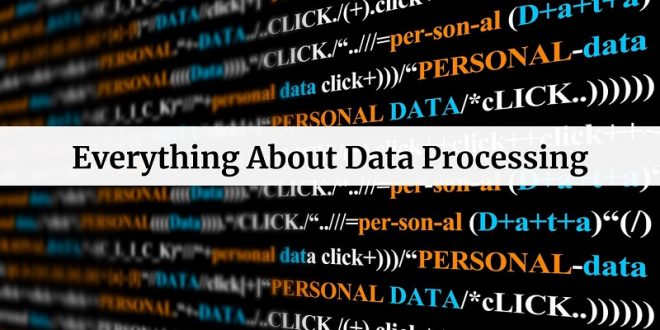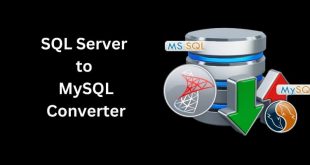Hey guys, in today’s blog, we are going to discuss data processing. So keep reading.
Data is the bedrock of every modern business. Data has an impact across every area of a business – marketing, sales, operations, administration, decision-making, branding, etc.
In today’s digitally connected world, it’s near impossible for a business to survive without data.
In whatever capacity you serve at a company, processing data is a critical skill to master. Without data, your company loses its competitive edge.
Hence, it’s pertinent to understand everything about data, and this guide is the introduction you need.
What Is Data Processing?
Processing data involves a series of processes that start from data collection to translate data into actionable insights.
Data processing can be handled by a single scientist or a team of experts. The number of people needed to manage a company’s data depends on how massive the data infrastructures are.
However, accuracy and correctness are a must irrespective of the number of people needed for processing data. If the data processing isn’t done correctly, it’ll negatively affect products and services. So, only the best possible professionals should handle a company’s data.
At the start of processing, data is always in a raw form. It isn’t easy to read and gain any information from the dataset in this raw form.
Hence, the data scientist must take the data through a series of stages before finally arriving at the stage of gaining contextual insight from data.
The Stages Of Data Processing
There are six stages involved in processing data. Below are details on each stage.
Data Collection
Before data can be used, it must be collected. Fortunately, in today’s world, numerous data sources exist. Examples of data sources are; social media, websites, emails, landing pages, Database as a Service company, etc.
Given the vast available data, collection must be done intelligently. Your company must build credible infrastructure to sift through the noise to collect high-quality data.
Data Preparation
After collection, preparation is the next step for your data. This can also be called ‘Pre-processing.’ The raw data is cleaned and adequately organized at this stage.
The collected data is also checked for errors at this stage. The cleaning process eliminates bad – redundant, incorrect, or incomplete – data.
Data Input
The high-quality data is then sent to its destination at this third stage. The destination, in this case, is databases and CRMs. At this stage, raw data begins to morph into an understandable and insightful format.
Data Processing
At the processing stage, the input data is up for interpretation. Then, machine learning algorithms are used to process data.
The data processing stage differs in operations, from one company (or Database) to another. The type of processing done depends on the data collected and its purpose.
Data Interpretation
The data interpretation stage produces the data usable for non-data experts. Everyone can read and understand the insights in the output. At this stage, the raw data now appears as graphs, images, text, videos, etc.
Data Storage
This is the final stage of processing data. You may not need to use processed data immediately. Hence, the need for storage.
The data storage process must comply with legislative standards like the GDPR.
Methods Of Processing Data
Data processing can proceed in three ways. The method you choose depends on peculiar in-house factors. Either of these three methods will work for your company:
Manual Processing
You can process data manually without using any machine, device, or tool from collection to logical operations, calculations, storage, etc. All are performed manually, which will take time.
Mechanical Processing
Mechanical processing involves using mechanical devices like calculators, typewriters, etc. This method can be used for a minimal volume of data.
Electronic Processing
This is the most commonly used method of processing data. It’s faster and supports larger data volume. It also has high accuracy and reliability.
In addition, electronic data processing leverages cutting-edge software technology to turn raw data into actionable insights.
Types Of Data Processing
There are different types of data processing. These data processing types are best executed in the electronic processing method.
Also, the one you choose depends on your company’s peculiarities. The popular types of data processing are;
- Batch processing
- Online processing
- Time-sharing
- Real-time processing
- Multiprocessing.
Importance Of Data Processing
Data is highly valuable to businesses. Hence, it’s essential to invest heavily in the data processing. Data processing has the following advantages for your business.
- Increased productivity
- Better decision making
- Easier validations of actions and decisions
- Easier use of data and information
- Aids the proper handling, storage, and maximization of data.
Tools You Need For Data Processing
In the modern world, you need tools to handle data appropriately. Here are the tools you need for the different stages of processing data.
- Data Collection: You need software tools like; Survey Monkey, Google forms, Social Media analytics
- Statistical Analysis: You need tools like; SAS (Statistical Analysis System)
- Calculations: You need EXCEL and CALC.
- Database Management: You need ACCESS and BASE
Conclusion
Data in its raw form requires work. For practical data usage, the processing is essential. Also, the processing has to be done accurately.
When there is an error in processing, it negatively affects the business. Hence, it’s critical to pay due attention to infrastructure processing data.
 Free Web Resources , psd, mockups, & web templates Best WordPress Themes & Best Html Templates
Free Web Resources , psd, mockups, & web templates Best WordPress Themes & Best Html Templates








